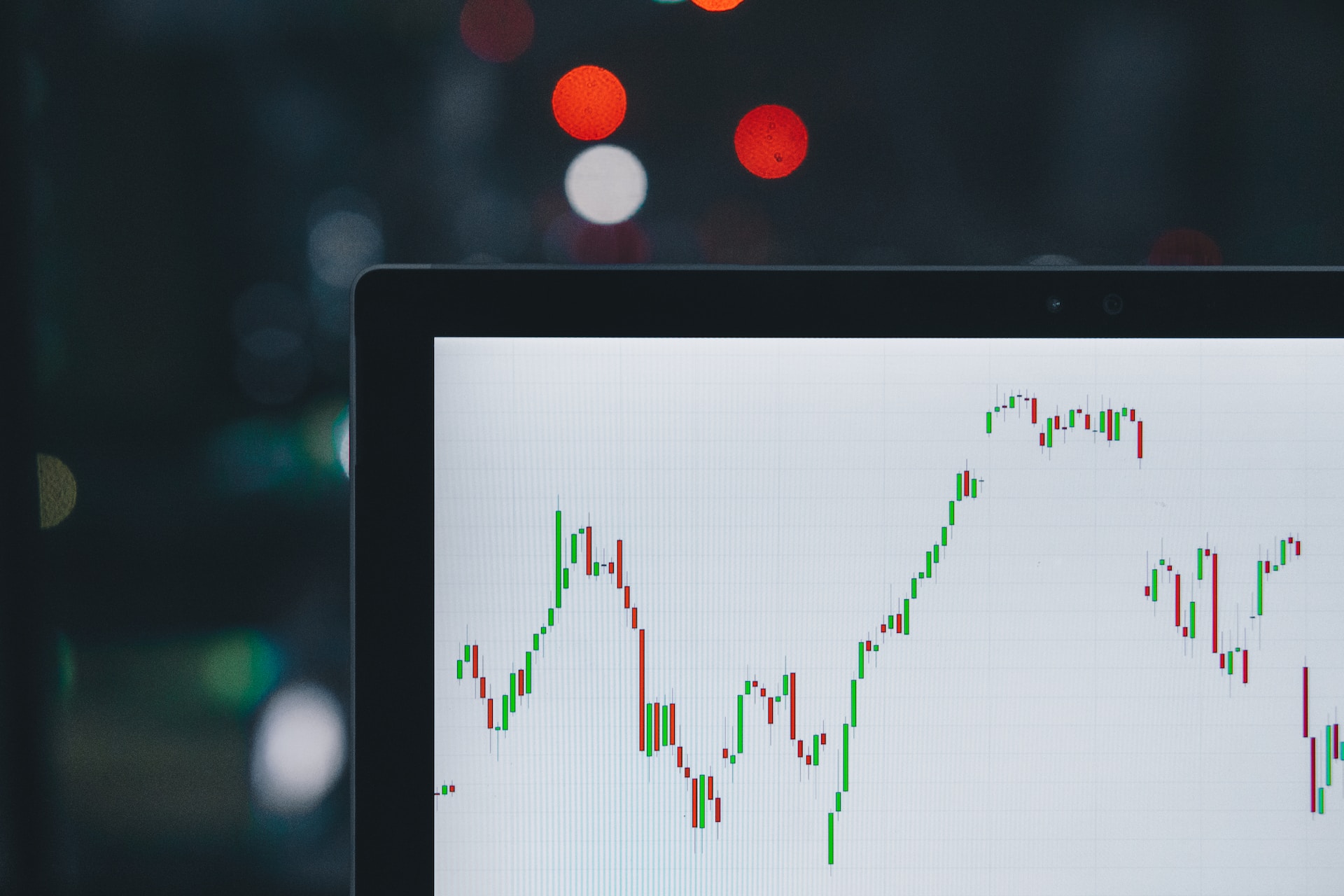Pivot Points Strategy You Should Know About
Although predicting the future is impossible, there are trading strategies that can provide indications to the direction trading may be headed. Learning these strategies along with your due diligence can improve your trading outcomes. One of these predictive tools is a pivot points strategy. Let’s take a look at the different types of pivot points and how to use pivot points in trading to help you incorporate a pivot points strategy into your trading toolbox.
What Are Pivot Points?
A pivot points strategy is a technical analysis indicator based on calculations that point to market trends over specific time frames. It is applied mostly in equity and commodity markets, and is most suitable for short-term trading where taking advantage of small price movements can pay off.
Using a pivot points strategy involves a few calculations based on the high, low, and closing prices of previous trading sessions. These calculations are used to chart support and resistance levels for a future trading session that indicate points where the direction of price movement may change or pivot. Hence, the name pivot points.
How to Calculate Pivot Point Levels
So, if a pivot points strategy is a technical analysis tool based on simple calculations, what are these calculations?
Daily pivot points are calculated using data from the previous day to plot the support and resistance levels for the following day. Swing traders often use data from the previous week to derive pivot points for the next week. This method can also serve day traders. There are different methods used to calculate pivot points. Some of the most common are:
Five points systemForex pivot points
Fibonacci pivot points
Camarilla pivot points
To simplify the explanation of these calculations, we will use the following representations:
H = High price from previous dayL = Low price from previous day
C = Closing price from previous day
PP = Main Pivot Point
R = Resistance Level (with a proceeding number to indicate level number)
S = Support Level (with a proceeding number to indicate level number)
Five Points System
One of the most common methods to calculate pivot points is the five-point system. It uses the previous day’s high, low and close with two support levels and two resistance levels, which adds up to five points. Charting these five points gives a predictive picture of where the market may be headed.
The formula works like this:
PP = (H + L + C)/3
S1 = (PP x 2) - H
S2 = PP - (H - L)
R1 = (PP x 2) - L
R2 = PP + (H - L)
A variation of this system is also sometimes used. In this variation, the pivot point is calculated in the same way but the opening price of the current day is added into the equation and the result is divided by 4. This modified pivot point is then used in the same formulas to come up with the two support and resistance levels.
What is considered to be the closing time?
Some stocks are only traded during certain times of the day. In those cases, the high, low, and close can be recorded from the day’s standard trading hours. Some markets however trade 24-hours a day, such as the currency trading forex market. In this case, a 24-hour cycle is usually used to calculate pivot points based on the New York closing time of 4PM EST. Forex trading also often uses GMT time to calculate pivot points with 23:59 GMT as a close and 00:00 GMT as the next day open time.
Pivot Point Forex Strategy
Forex pivot points, used by forex traders, look at the bounce and break of price levels to help in identifying where a breakout trade may occur. The pivot point is calculated the same as in the five points method, but then three resistance and three support levels are calculated.
The formula works like this:
R1 = (2xPP) - L
S1 = (2xPP) - H
R2 = PP + (H - L)
S2 = PP - (H - L)
R3 = H = 2(PP - L)
S3 = L = 2(H - PP)
In forex trading, a 24-hour currency exchange, the currency price will repeatedly test the support and resistance levels. The more times the price touches on a pivot level and then reverses (or pivots) the stronger the level is considered to be. If the level is holding it can forecast an opportunity for selling or buying. Holding a resistance level can signal selling while holding a support level can signal buying.
Fibonacci Pivot Points
This method calculates the main pivot point using the standard five-point method, but then uses different ratios to calculate three support levels and three resistance levels. This method is often used to determine moving averages and to spot high or low swings in price.
Fibonacci method is calculated as:
R1 = PP + ((H - L) x .382)
R2 = PP + ((H-L) x .618)
R3 = PP + ((H-L) x 1.000)
S1 = PP - ((H-L) x .382)
S2 = PP - ((H-L) x .618
S3 = PP - ((H-L) x 1.000)

Camarilla Pivot Points
The Camarilla method of calculating pivot points is another variation formula from the standard five-point system. This method calculates eight major levels from the main pivot point, four resistance and four support. This method tends to give more emphasis to the closing price instead of to the main pivot point. The calculations are based on the concept of the price more often than not reverting back to the previous day’s close. Each level is multiplied by a different multiplier.
The formulas work like this:
R1 = C + ((H-L) x 1.0833)
R2 = C + ((H-L) x 1.1666)
R3 = C + ((H-L) x 1.2500)
R4 = C + ((H-L) x 1.5000)
S1 = C - ((H-L) x 1.0833)
S2 = C - ((H-L) x 1.1666)
S3 = C - ((H-L) x 1.2500)
S4 = C - ((H-L) x 1.5000)
Help in Calculating your Pivot Points Strategy
These calculations and methods may be simple, but charting platforms make it even simpler by calculating pivot points for you. All you need to do is input the indicators and preferred settings. A chart will then be generated for you to see pivot lines and trends.
Although there are charting platforms that will do the calculations for you, it is also good to know what is being calculated. You do need to set the correct closing time and price. Charting platforms are only as good as the data you feed it. It is also good to know that not one method is necessarily better than another.
How to Trade Pivot Points
Knowing how to use pivot points is a matter of learning how to interpret them so you can use them as a predictive tool. The pivot point is calculated as the main support and resistance level so the expectation is that the largest price movement will happen at that price. The other support and resistance level calculations are there as a guide to where substantial price movements may also occur. The main pivot point works more as the primary pivot daily indicator.
Traders use a pivot point strategy to:
Establish market trendsDetermine entry and exit points
Identify areas of support and resistance
Market Trends
A pivot point strategy can be useful in establishing market trends. If the pivot point price breaks in an upward movement then the market is thought to be trending in bullish territory. If the price drops through the pivot point then the market is thought to be trending in bearish territory.
Enter or Exit?
A pivot point strategy can also be useful in determining when to enter or exit the market. A trader can put in a limit on when to buy if a price breaks a resistance level calculated using pivot points. Or a trader can set a stop loss if a price nears a support level. It gives predictive parameters to your trading.
Areas of Support and Resistance
The resistance level is identified above the pivot point or a higher price level and the support level is below the pivot point or a lower price level. Spotting reversal points through this technical analysis can help stop losses and level gains. Again, this is most useful for short term traders because it can help in taking advantage of small price movement.
Effective but Not Foolproof
No predictive tool is foolproof. This is true when using pivot points as well. A pivot point strategy is great to understand and have as a part of your trading toolbox, but it cannot be the only strategy you employ. It is most effective when used with other indicators. The more tools in the toolbox the better. If you are going to be a successful trader, filling your trading strategy toolbox is important, but no strategy is effective without also pairing it with due diligence.

